I opened up a really tiny mobile phone charger I have, to see how it is designed. The entire "charger" is integrated into a small 2-pin mains plug, 1 x 1.25 x 0.5 inch, that has an USB socket for the phone's USB charging cable.
I could not find anything that seems to be a transformer anywhere in the circuit, and yet I have tested that it is an isolated 5 volt well-regulated output. The tiny flexible PCB has merely a dozen or so SMD parts, ranging from 0402 to 4516 (metric), plus the connectors at the two ends, for mains and for USB. The SMD parts all have part numbers sanded off.
How do they manage the isolation in these chargers?
Responses to comments: This is a no-name "Hi-Standard USB phone charger, Extra Powerful!" I have just bought in Korea, that is supposed to work with any USB-charged cellphone. They have pictures of a half dozen different cellphones on the box, and a hydra USB cable inside that has mini-USB, micro-USB and some other types of connectors.
I bought it just to see whether it is safe or not. That is why I tested for isolation first.
